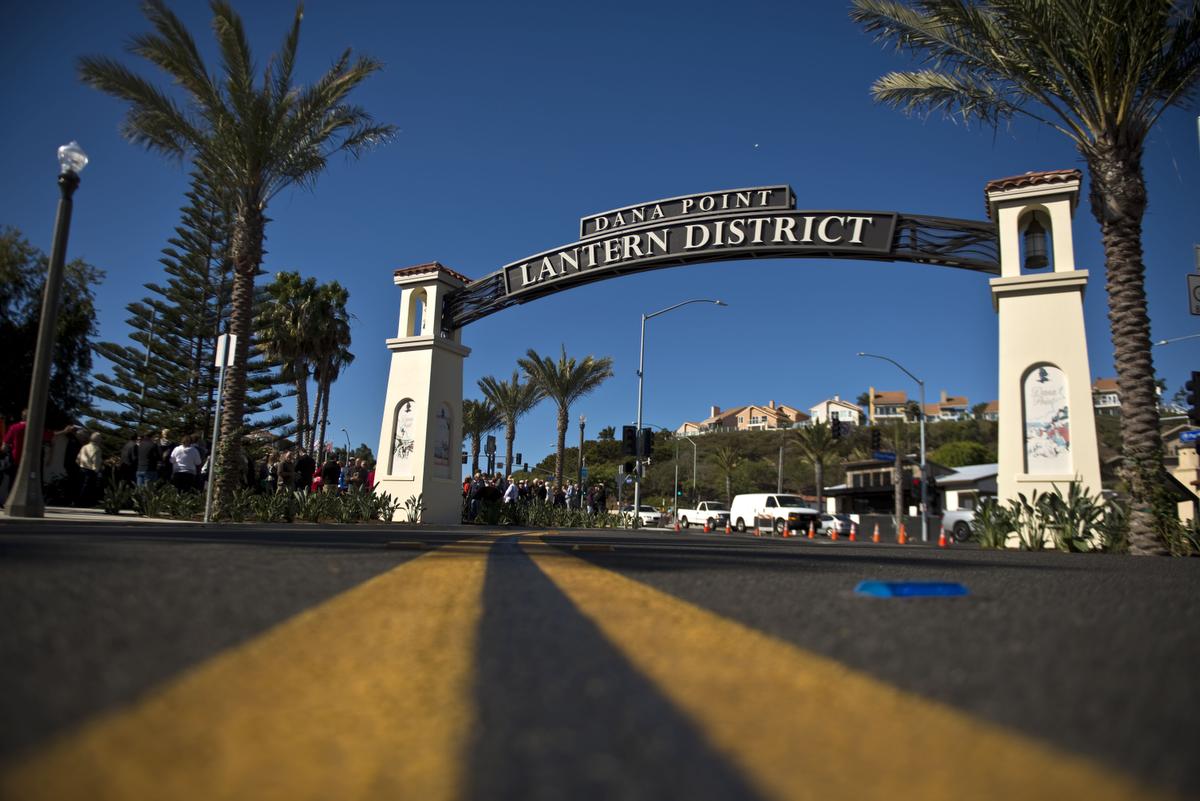Via Dana Point Times: Visitors and residents will soon have access to free public Wi-Fi as they stroll down Del Prado Avenue. The City Council voted unanimously Tuesday to approve an agreement with SmartWave Technologies to install 11 access points providing public Wi-Fi on Del Prado, with the goal to have the Wi-Fi running this year. The cost to install the public Wi-Fi is $58,670, with $5,400 a year in maintenance.
SmartWave Technologies President and Chief Executive Officer Al Brown explained that the project will be built so the Wi-Fi system could be scaled to more neighborhoods and extended to other parks within Dana Point. Building Wi-Fi in your home is pretty easy, right; you put up an access point, but you can’t really invite 5,000 of your closest friends inside your home and have a good Wi-Fi experience,” Brown said. “That’s what we’re doing here. “We’re going to open it up for connectivity to promote the downtown area, the Del Prado area,” Brown continued.

“We’re going to open it up for connectivity to promote the downtown area, the Del Prado area,” Brown continued.
On Tuesday, Nathan Rosenberg, the senior vice president of Business Strategy for The Broadband Group, presented the results of a digital infrastructure and cellular coverage survey.
The survey, which analyzed Verizon, AT&T and T-Mobile coverage within the town, concluded that Verizon has the best coverage of the three carriers. To enhance cell coverage, the survey recommended additional towers, noting there are coverage holes within the city from existing towers.
“This is just literally, ‘Does your phone or tablet have a connection when you’re in that part of the city?’ So, the report also includes some coverage maps for the higher frequency 5G, ultra-fast connections; that’s not even this,” Rosenberg said of the report. “This is literally just, ‘Do you have a connection?’ And even at this base level, Verizon has some trouble in the city.”
Rosenberg noted there were coverage gaps in Capistrano Beach and other areas in the city. He added that police and firefighters “were well aware of the cellular gaps and exactly where they were in the city, because they depend on that connectivity to do their job.”
“Technology, of course, changes every couple of years, but the infrastructure that that runs on, the infrastructure of the internet, lasts often for decades,” Rosenberg said.
“The quality of the internet here in Dana Point very much so is directly related to land use, zoning, utility decisions that were made in the 1980s and 1990s that we still live with today,” Rosenberg continued. “So, as the city embarks on long-range planning, it’s important to look at what is the digital infrastructure.”
Rosenberg said The Broadband Group recognizes that digital infrastructure today “is to local economies what roads and rails and ports and airports were in the previous centuries,” with so many workers dependent on internet connectivity.
“The important thing for the council to appreciate about this is that for many, many reasons, Dana Point is an extremely challenging place to build out a high-quality cellular network,” Rosenberg said.
Rosenberg noted that the city’s geography, topography and land-use present challenges to providing a strong cellular network.
“It’s hilly; it’s hard to find quality spots that cover large areas,” Rosenberg said.
“Second, as you no doubt know better than anyone, most of the city geographically is residential, and I can’t think of a homeowner who wants to have a cell tower on their front lawn,” Rosenberg continued. “Many jurisdictions actually ban cell towers from residential areas.”
The survey recommended Dana Point create a plan to connect city-owned real estate to fiber and take advantage of “dig-once opportunities and grants.”
“We’ve seen time and time again, it sounds so simple, but just having a plan that covers the entire city is enormously helpful, because inevitably grants get announced with very little notice, and it’s the cities that have a plan in place that are able to take advantage of those grants,” Rosenberg said.
Additionally, The Broadband Group recommended the city look for opportunities to lay communications conduit during other projects where the roads are already dug up.
“If a trench is already open, the cost of placing additional conduit is quite minimal,” Rosenberg said.
The city was also encouraged to communicate with the cell service providers to see what the city can do to support bringing fiber to more residences.
Public Works Director Matt Sinacori said his department has already started working on many of The Broadband Group’s recommendations.
“We’ve given you the findings of the assessment that was done, and staff will take all those things and run with them, because it’s very clear direction for us,” Sinacori said.
